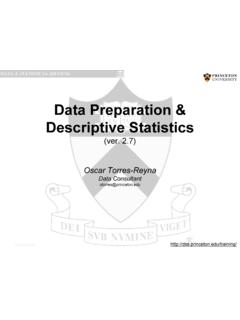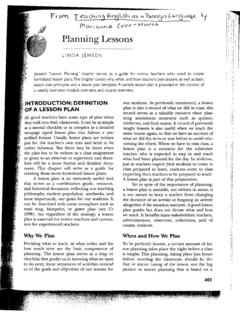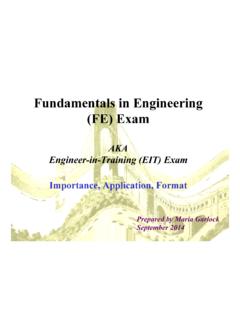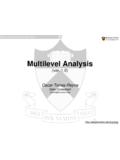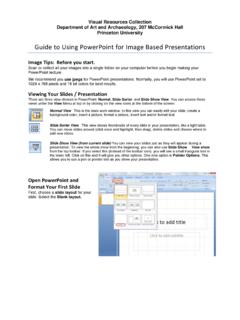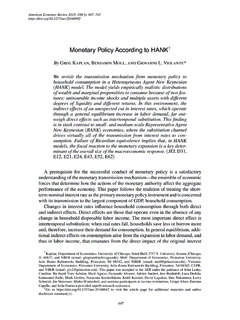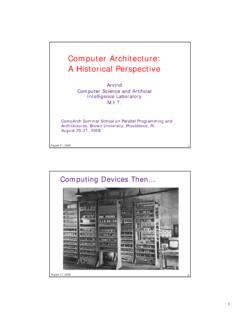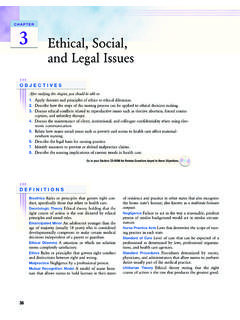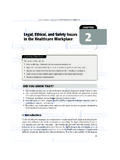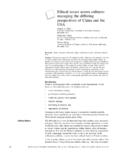Transcription of Legal, Ethical, and Economic Issues - Princeton University
1 Part IVLegal, ethical , andEconomic IssuesChapter 8 legal Issues Raised by Genetic Testing in the Workplace .. 111 Chapter 9 Application of ethical Principles to Genetic Testing .. 141 Chapter 10 Prospects and Problems for the Economic Evaluation of Genetic Testing .. 151 Chapter 8 legal Issues Raised byGenetic Testing in theworkplaceContentsPageBasic Rights and Duties Governing Employment and Medical Practices .. , ,., .. 112 Employer Rights and Duties .. 112 New Rights and Duties Created by Workers Compensation Laws .. 112 Exceptions to the Exclusive Remedy Rule .. 113 Dual Capacity .. 113 Willful and Intentional Torts.. 114 Products Liability .. 114 Rights and Duties in Company Medical Practices .. 115 The Doctor-Employee Relationship .. 115 The Doctor-Employer Relationship.
2 115 Duty to Conduct Medical or Genetic Testing .. 116 Employees Right to Refuse an Exam .. 116 Testing Solely for Research Purposes .. 116 Disclosure of Health Risks .. 117 Employee Access to Medical Records .. 117 Confidentiality of Medical Records .. 117 Statutory Regulation of Company Medical and Employment Practices .. 118 Occupational Safety and Health Act .. 119 Genetic Testing and the General Duty Clause .. 120 Employee Variability in Standards Setting.. 120 Genetic Monitoring and OSHA Standards .. 121 OSHA Regulation of Employer Medical Procedures .. 121 Medical Removal Protection and Rate Retention .. 122 Access to Exposure and Medical Records .. 123 Title VII of the Civil Rights Act of 1964 .. 123 Disparate Impact of Genetic Testing .. 124 Business Necessity and Job Relatedness.
3 124 Employee Refusal To Submit to Medical Tests.. 125 The Rehabilitation Act and State Fair Employment Laws .. 126 Medical Examinations and Screening Tests .. 127Is Genetic Susceptibility or Chromosomal Abnormality a Handicap? .. 127 Job Relatedness of Screening and Monitoring .. 128 Reasonable Accommodation .. 130 Collective Bargaining Agreements and Employment Practices .. 131 Protected Activities of Employees .. 131 Employee Access to Safety and Health Information .. 131 Provisions in Collective Bargaining Agreements .. 132 Union s Duty of Fair Representation .. 132 Contract Enforcement and Arbitration .. 133 Conclusion .. 133 Chapter preferences .. 135 Chapter 8 legal Issues Raised byGenetic Testing in the workplaceGenetic testing raises many legal Issues forwhich there are few clear answers.
4 The most fun-damental question is whether the technology iscompatible with existing laws and the establish-ed legal rights of employees. This question em-bodies a number of Issues within the broad spec-trum of employee-employer relations, rangingfrom the nature of the doctor-employee relation-ship through the proper use of the test resultsto the employer's responsibility to prevent occu-pational illness. These questions may be specifiedas follows:Who has the legal responsibility for achiev-ing and maintaining a safe workplace? What does safe mean? How is safety to be achieved?To what extent does the law protect the in-terests of individuals or groups who may beat increased risk of occupational illness?
5 When, if ever, does an employer have a du-ty to use certain medical procedures, includ-ing genetic testing?What are the legal constraints on occupa-tional medical testing procedures, whetherused routinely or for research? What information must be given to theemployee? What use can be made of the results?What are the employer s rights to use em-ployee selection methods that it deems ap-propriate?Under what circumstances could the Occupa-tional Safety and Health Administration(OSHA) require medical tests in general andgenetic testing in particular?To what extent can employers and employeesor their unions negotiate their own answersto these questions?No Federal statute specifically covers or evenrefers to genetic testing in the workplace.
6 NoFederal court cases have dealt with the , there are no direct legal precedentsto guide decisionmaking. However, there aremany established legal principles governing therights and duties of employers, employees, com-pany medical personnel, and unions. These canbe applied to the Issues raised by this new tech-nology,There are three major ways that legal rights andduties governing emlployer-employee relations arecreated. The first is by judicial decision, whichproduces a body of legal principles known as thecommon law. The second is by legislative and State statutes can expand, modify,or overturn common law rights and duties or cre-ate new ones. The first major example of this inemployer-employee relations was the enactmentof workers compensation laws by all of the Statesin the first part of this century.
7 Other applicablestatutes include the National Labor Relations Act(NLRA), the Occupational Safety and Health Actof 1970 (OSH Act), the Civil Rights Act of 1964,and the Rehabilitation Act of 1973. The third wayis by contractual arrangements between and unions. These are known as collectivebargaining agreements and are authorized by theNLRA. Rights and duties with respect to companyemployment and medical practices may be , modified, or enhanced by collective bargain-ing agreements so long as they are not incompati-ble with existing sources of law provide a useful frame-work for addressing the legal Issues raised by ge-netic testing in the . The Role of Genetic Testing in the Prevention of Occupational DiseaseBasic rights and duties governing employmentand medical practices _.
8 The common law provided the initial source oflegal principles governing relationships amongemployers, employees, and company compensation laws substantially mod-ified the relationship between employer and em-ployee, but the common law continues to be rele-vant, especially in the doctor-employee relation-ship and in litigation concerning occupational ill-ness, such as the asbestos rights and dutiesUnder common law, an employer had virtual-ly unfettered control in selecting its employer could hire or refuse to hire for anyreason or no reason at all. This right included theright to refuse to hire an individual because ofthe employer s opinion that the prospective em-ployee was physically incapable of performing thejob.
9 Once hired, the employee could be fired atwill by the employer for any reason or no rea-son at all, including the employer s belief that theemployee could no longer perform the job be-cause of his physical condition. This has beenmodified by State and Federal common law, employers had five mainduties for the protection of employees. Thesewere to: 1) provide a safe place to work, 2) pro-vide safe tools and equipment for the work,3) warn of dangers about which the employeemight reasonably be expected not to know, 4) pro-vide a sufficient number of suitable coworkersto ensure the safety of each worker, and 5) pro-mulgate and enforce rules that would make thework safe.
10 These duties are still recognized bythe law in the 50 States and the District of employee who suffered from an injury orillness related to his employment had a right tosue the employer for damages. Because these suitswere based on common law negligence, * employ-ers usually were able to escape liability by invok-ing the common law defenses of contributory neg-ligence, assumption of risk, and the fellow serv-ant rule (53). That is, if the injury or illness wascaused in any part by the negligence of the in-jured worker or any coworker, or if the employeeexpressly or impliedly assumed the risk of work-ing in a hazardous job, there was no concept of assumption of the risk may berelevant in some cases involving genetic rights and duties created byworkers compensation lawsBeginning in 1910 with New York, the Statestook steps to relieve the hardship of industrial ac-cidents on individual workers and their familiesby passing workers compensation laws.
